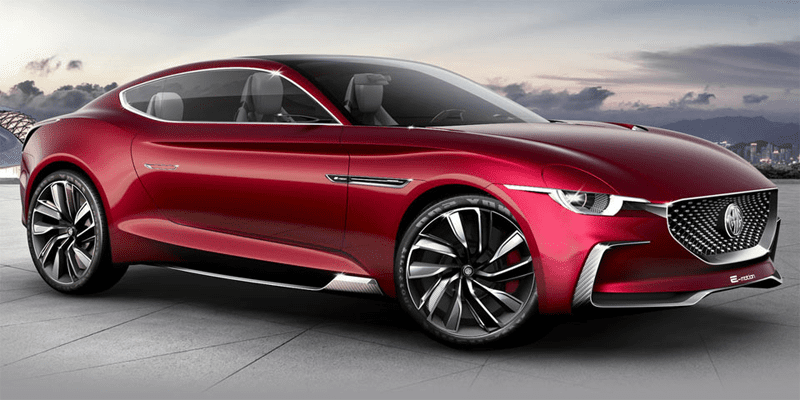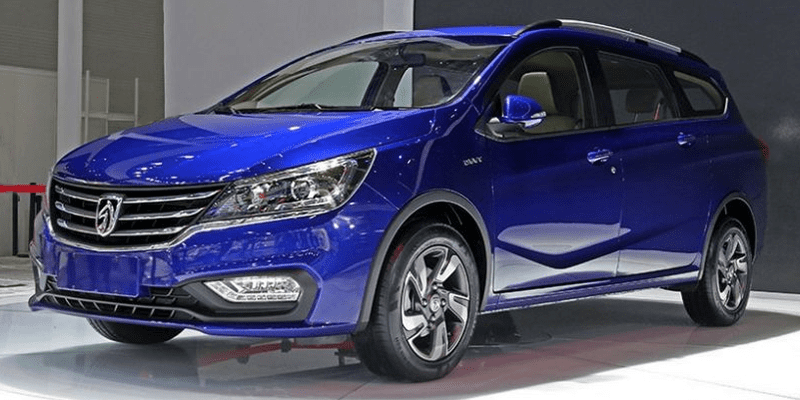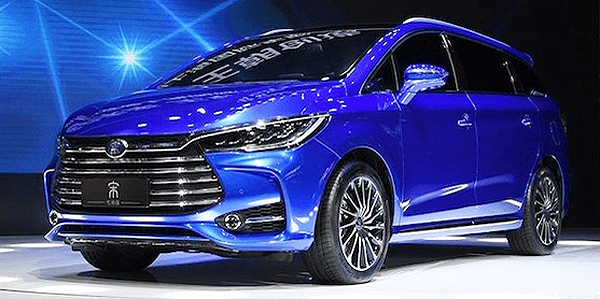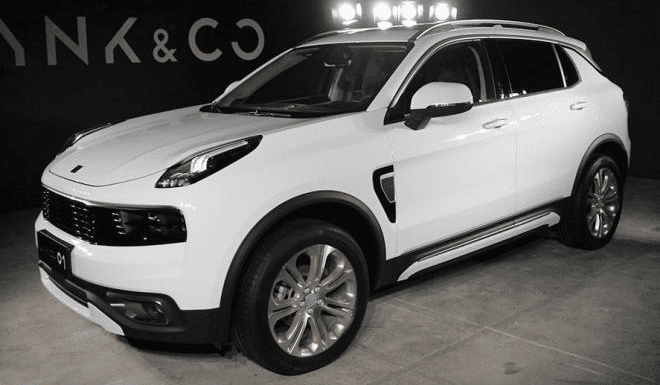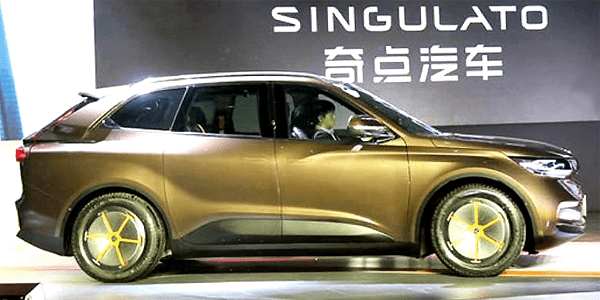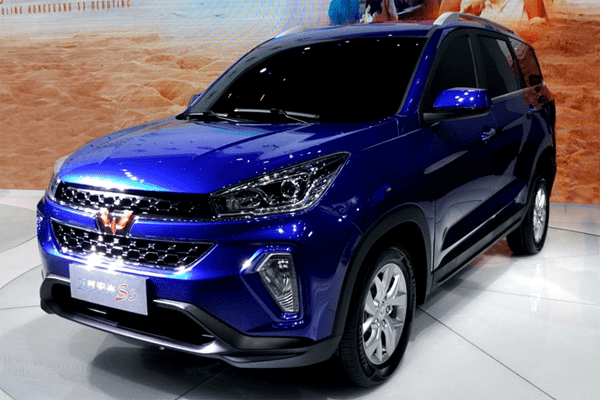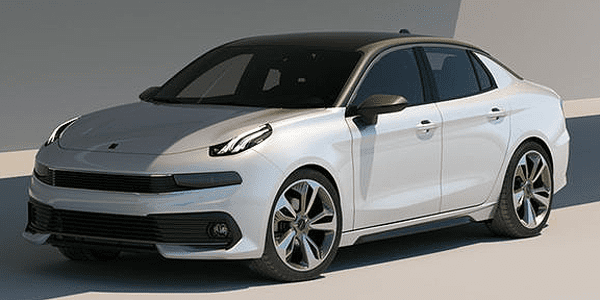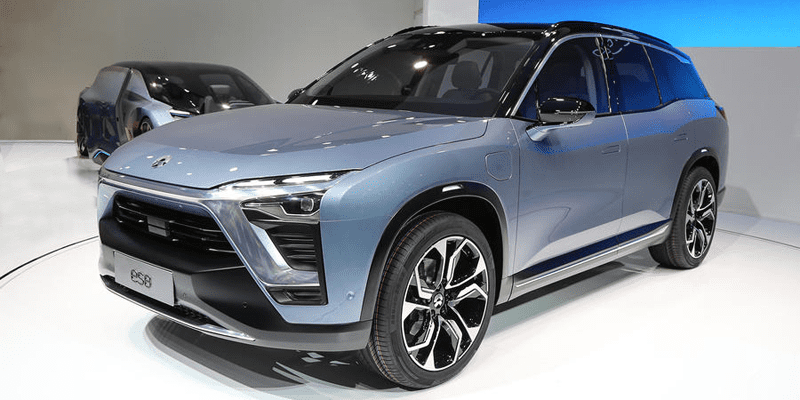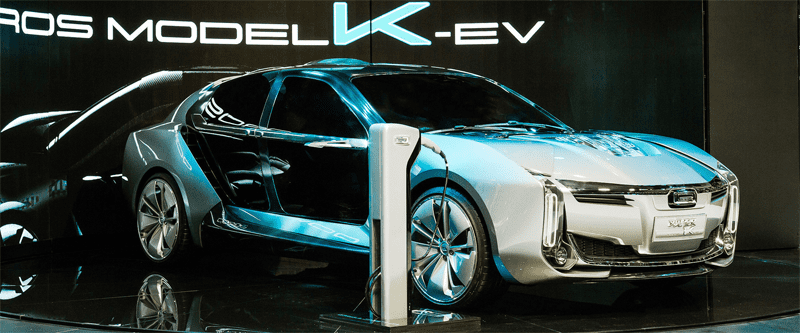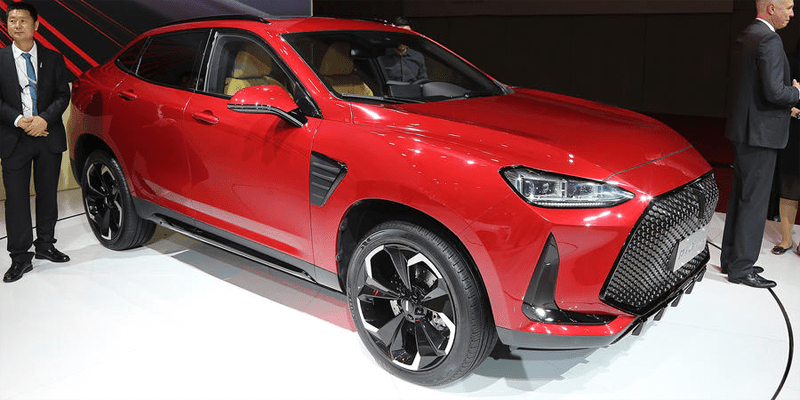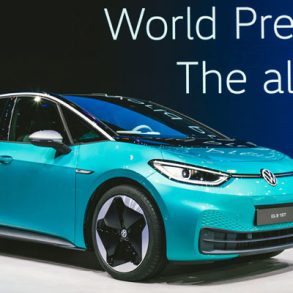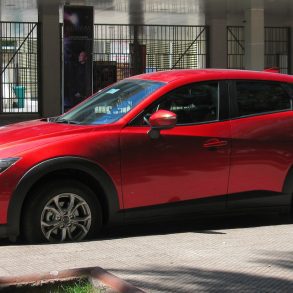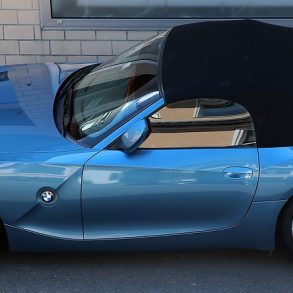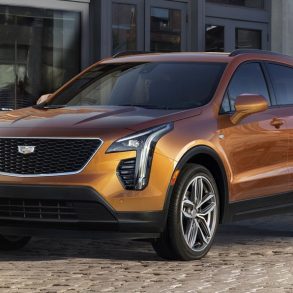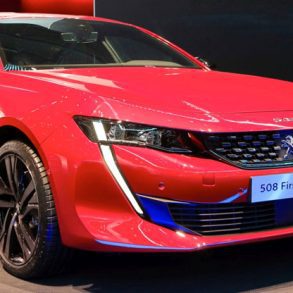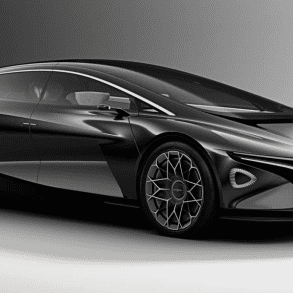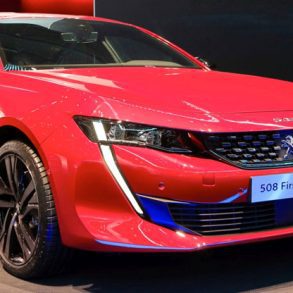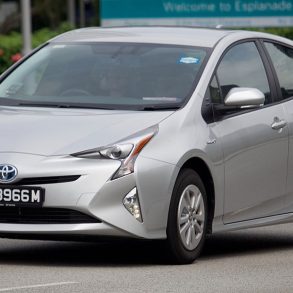The Shanghai Auto Show is the largest auto show in the world with 350.000 square meters (3.7 million square feet) of floor space, over 1.300 cars on display and close to 1 million visitors. And while you may think the cars from international brands are the most relevant for the worldwide automotive industry, the domestic Chinese automakers are eager to show off the impressive progress they’re making in terms of quality and design. Some of their launches and concept cars are destined to be exported to the European and US markets as well.
There’s simply too much news in Shanghai to discuss all the news, but we’ll take a closer look at the most relevant, most notworthy and most impressive production cars and concept cars.
Production cars:
Baojun 310 Wagon
Wagons are not a popular bodystyle in China, where sedans have traditionally ruled, MPVs were the alternative if more seats were required and SUVs are now the hottest thing around. Hatchbacks never really caught on in the People’s Republic either, which makes it that much more surprising that Baojun has a sudden hit this year with its ultra-cheap 310 hatchback, selling over 50.000 units in the first three months of 2017. Will the 310 Wagon be able to crack the cheap station wagon market in China too?
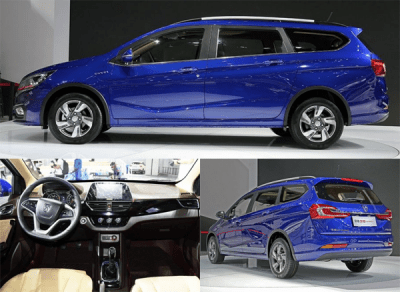 Most of that depends on price and design. The former is not yet known, but the hatchback was priced amazingly low, so I can’t imagine the wagon commanding a huge premium, while the design is actually surprisingly well-executed, both inside and out. Well, except for the too small wheels, as usual from Chinese brands.
Most of that depends on price and design. The former is not yet known, but the hatchback was priced amazingly low, so I can’t imagine the wagon commanding a huge premium, while the design is actually surprisingly well-executed, both inside and out. Well, except for the too small wheels, as usual from Chinese brands.
What’s significant, is that this car basically makes the unsuccessful Chevrolet Lova RV obsolete. Baojun is a brand from the SAIC-GM-Wuling Joint Venture and therefore partially owned by General Motors. The 310 Wagon is much better looking, is larger (40cm longer with a wheelbase 20cm longer) and likely to be much cheaper, as the 310 hatchback starts at 36.800 yuan (€4.990,- / US$ 5,470), less than half the price of the Lova RV, which starts at 74.900 yuan. Both use the same powertrain.
BYD SongMPV
BYD has been one of the most technologically advanced Chinese automakers, which resulted in being the world’s best seller of EVs and PHEVs, its designs have been a weak spot as they were messy, inconsistent and uninspired. BYD is about to change that, as it hired German Wolfgang Egger to lead its design team. Egger was head of design at Audi before switching to BYD, and one of his most impressive designs is still the Alfa Romeo 8C Competizione. One of his first designs for the Chinese brand is the SongMPV, a 7-seat MPV with initially just traditional powertrains 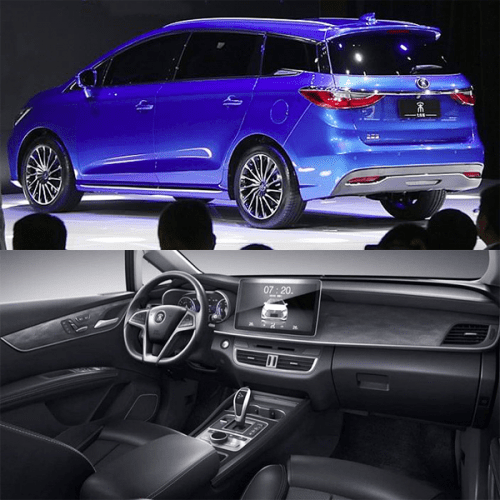 with gasoline powered engines, although the company claims to be working on a 300hp hybrid version to be launched next year. The SongMPV is arguably the best looking BYD we’ve seen, with sharp lines, an impressive grille and clean, modern overall lines. The only weak spot may be the C-Pillar with the visually floating roof, this has been done too many times lately, especially by Chinese automakers. Song is expected to become a sub-brand under BYD, with also a crossover and sedan planned. BYD also showed the Dynasty SUV concept which is expected to be turned into a production model next year, and this too looked very impressive too. With their design on par with “Western” standards, BYD is now a force to be reckoned with.
with gasoline powered engines, although the company claims to be working on a 300hp hybrid version to be launched next year. The SongMPV is arguably the best looking BYD we’ve seen, with sharp lines, an impressive grille and clean, modern overall lines. The only weak spot may be the C-Pillar with the visually floating roof, this has been done too many times lately, especially by Chinese automakers. Song is expected to become a sub-brand under BYD, with also a crossover and sedan planned. BYD also showed the Dynasty SUV concept which is expected to be turned into a production model next year, and this too looked very impressive too. With their design on par with “Western” standards, BYD is now a force to be reckoned with.
Lynk & Co 01 SUV
Lynk & Co is aiming to be the first Chinese brand to sell its vehicles in the United States, and its first model is the appropriately yet not very originally named 01. The 01 will start sales in China by the end of this year and is expected to be launched in the US and Europe in 2019. Lynk & Co will be positioned between the premium Volvo brand and the mainstream/budget Geely brand, as the three brands share the same owner. The company promises to take a 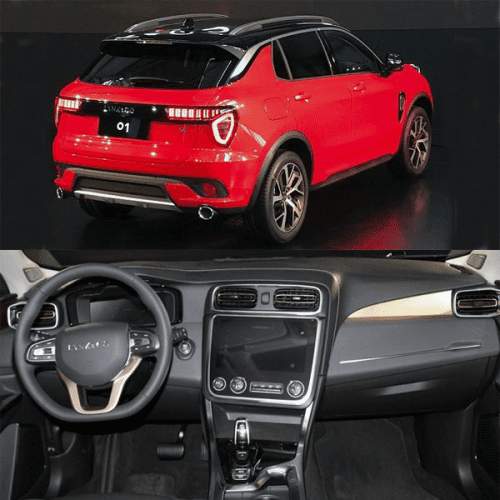 different approach towards sales and ownership of its vehicles, for example selling online and offering lifetime warranty and data. In the concept phase the brand also talked about technology that would enable owners to share or rent out their vehicle, but this will need some more development before it actually becomes reality. Back to the 01, which is an SUV based on the platform that will also underpin the upcoming Volvo XC40 which means it’s technologically up-to-date and it looks very mature, both inside and out. It certainly wouldn’t look out of place in the US or European streets, and if they get their sales and marketing strategy right, I’m sure the brand has the potential to conquer these markets and perhaps pave the way for other Chinese automakers to follow in its footsteps. Don’t expect the Chinese copy the Korean strategy of starting off with cheap and unrefined vehicles before moving upmarket quickly as design and quality improved, the Chinese want to compete with the big boys from the get-go.
different approach towards sales and ownership of its vehicles, for example selling online and offering lifetime warranty and data. In the concept phase the brand also talked about technology that would enable owners to share or rent out their vehicle, but this will need some more development before it actually becomes reality. Back to the 01, which is an SUV based on the platform that will also underpin the upcoming Volvo XC40 which means it’s technologically up-to-date and it looks very mature, both inside and out. It certainly wouldn’t look out of place in the US or European streets, and if they get their sales and marketing strategy right, I’m sure the brand has the potential to conquer these markets and perhaps pave the way for other Chinese automakers to follow in its footsteps. Don’t expect the Chinese copy the Korean strategy of starting off with cheap and unrefined vehicles before moving upmarket quickly as design and quality improved, the Chinese want to compete with the big boys from the get-go.
Singulato iS6
The Singulato iS6 is an EV crossover from a Beijing-based startup automaker that is expected to hit the market next year and compete directly with the Tesla Model 3. Its projected range of 400km/250 miles (but expect something closer to 3/4 of that figure in real life conditions) at an expected price of 200.000 to 300.000 yuan (US$29,000 to US$ 43,500) does indeed sound very similar to what Tesla promises. Oh, and of course it also has a huge standing touch screen in its center console and pop-out door handles. But as far as similarities between these two models go, 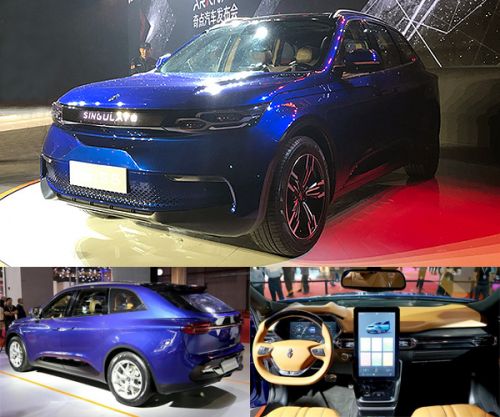 that’s about it. Where the Model 3 is a sexy looking sedan, the iS6 is an awkwardly proportioned crossover, especially its rear end which is visually enormous due to the large rear overhang, shoulder line and large surfaces. It looks pretty nice from the front 3/4 but I just can’t get used to that rear. The more I look at it, the worse it gets. And then there’s a “sport” version which has wings in its C-Pillar (the brown one in the picture above). From what I’ve seen from the interior so far, it seems a tad too busy and overdesigned, with lots of shiny surfaces, the complete opposite if the Model 3 with its minimalistic approach to dashboard design. Singulato promises to start low-volume production this year in preparation for mass production next year, but it’s not yet clear to me in which factory they’re planning to have it produced. The order books are already open, though.
that’s about it. Where the Model 3 is a sexy looking sedan, the iS6 is an awkwardly proportioned crossover, especially its rear end which is visually enormous due to the large rear overhang, shoulder line and large surfaces. It looks pretty nice from the front 3/4 but I just can’t get used to that rear. The more I look at it, the worse it gets. And then there’s a “sport” version which has wings in its C-Pillar (the brown one in the picture above). From what I’ve seen from the interior so far, it seems a tad too busy and overdesigned, with lots of shiny surfaces, the complete opposite if the Model 3 with its minimalistic approach to dashboard design. Singulato promises to start low-volume production this year in preparation for mass production next year, but it’s not yet clear to me in which factory they’re planning to have it produced. The order books are already open, though.
Wuling Hongguang S3
The Wuling Hongguang has been China’s best selling car for years now, easily selling over 650.000 units a year of this 7-seater MPV, and the new S3 version has now been made to look more crossover-like. The result is a bit of a mix between an MPV and a crossover, thanks to the higher ground clearance, a more pronounced “nose” and black wheel arches. The base engine is the same as the one mentioned above in the Baojun 310 Wagon, a 1,5-liter 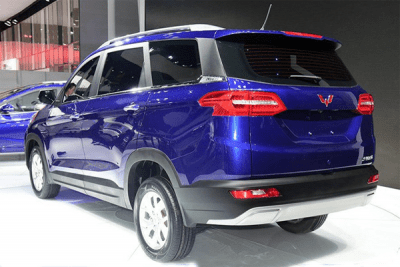 turbocharged engine is optional. No doubt they’re going to sell a ton of these again, so just for that reason it’s noteworthy here. The S3 looks a lot more chunky than the current Hongguang, but it suffers from the same issue that plagues almost all Chinese automakers: way to small wheels. They do this to save costs, but also to improve fuel economy, but in my view it comes at the cost of aesthetics but more importantly also of safety and stability. Its interior is on par with what we’re used to from most domestic automakers: a large touch screen on top of the center console and the use of bright colors to make it a bit trendy.
turbocharged engine is optional. No doubt they’re going to sell a ton of these again, so just for that reason it’s noteworthy here. The S3 looks a lot more chunky than the current Hongguang, but it suffers from the same issue that plagues almost all Chinese automakers: way to small wheels. They do this to save costs, but also to improve fuel economy, but in my view it comes at the cost of aesthetics but more importantly also of safety and stability. Its interior is on par with what we’re used to from most domestic automakers: a large touch screen on top of the center console and the use of bright colors to make it a bit trendy.
Concept cars:
Lynk & Co 03 Sedan
Besides its 01 SUV, which is ready for production, Lynk & Co also showed off a concept for a sedan model, called the 03. The sedan looks very production-ready as well, and the final production version is expected to launch in China next year. The 03 sedan is built on the same platform as the 01 and the upcoming Volvo compact cars. The front-end design is very similar to that of the 01 SUV, and actually so much so that the nose seems a bit high for a sedan, 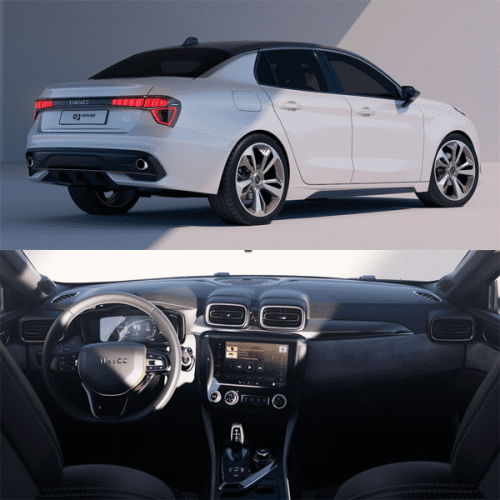 especially when seen from the sides. Still, the overall design is not unattractive at all, with large wheels and a short and muscular rear-end which is still higher than the front. The C-Pillar design is perhaps not very original, but somehow it works on this car, perhaps because its roof is in a darker color entirely. The rear lights have a similar shape as those of the SUV, and an impressive rear diffusor underscores its intentions as a sports sedan. The production version probably will have slightly smaller wheels and a more subtle diffusor. The interior is very similar to that of the 01 too, although it logically looks like the designers have had more time to refine the look and feel even further. Of course SUVs and crossovers are hot at the moment, in China as much as in Europe and the US, so it makes sense for the start-up brand to enter the hottest segment first, but I think the sedan certainly has potential too, considering how mature and attractive it looks.
especially when seen from the sides. Still, the overall design is not unattractive at all, with large wheels and a short and muscular rear-end which is still higher than the front. The C-Pillar design is perhaps not very original, but somehow it works on this car, perhaps because its roof is in a darker color entirely. The rear lights have a similar shape as those of the SUV, and an impressive rear diffusor underscores its intentions as a sports sedan. The production version probably will have slightly smaller wheels and a more subtle diffusor. The interior is very similar to that of the 01 too, although it logically looks like the designers have had more time to refine the look and feel even further. Of course SUVs and crossovers are hot at the moment, in China as much as in Europe and the US, so it makes sense for the start-up brand to enter the hottest segment first, but I think the sedan certainly has potential too, considering how mature and attractive it looks.
MG E-Motion
This is probably the star of the show, and by far the sexiest Chinese car ever made. Just as we thought SAIC was wasting the legendary MG brand on bland sedans, hatchbacks and crossovers, they show this jawdropping sports car to the world. And best of all: it’s not just a concept car, MG plans to actually start production next year, at first with a 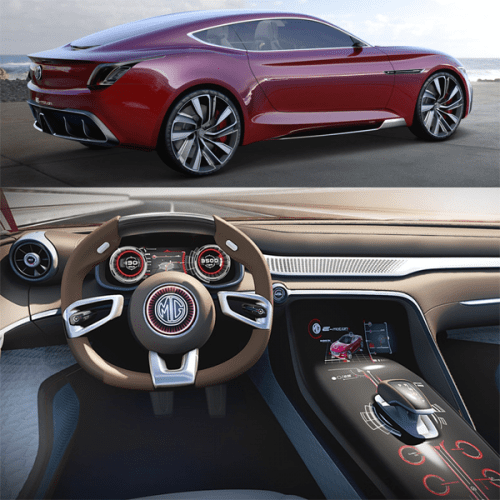 plug-in hybrid drivetrain and later as an EV. The E-Motion actually does look almost production ready, except perhaps for the enormous diffusor in the rear bumper. Besides this feature, the design is very clean, without too much bling or over-the-top styling. This design is simply stunning with the extremely wide rear-end and bulging fenders, and a roof that narrows as it merges into the bootlid. The sides are very powerful with the pronounced creases and the stretched silhouette. At the front, the grille is impressive but not too extreme, the nose is wide and low with a swooping hood, while MG hid a nice gimmick in the headlights: they have a pop-up top in the hood. The interior looks luxurious and modern, although perhaps a bit too futuristic to make it into the production version as-is. But it does show how far Chinese design has come in such a short period. And as opposed to other brands which attract experienced designers from established brands (p.e. BYD as mentioned above), the E-Motion is drawn by a Chinese designer, Shao Jingfeng.
plug-in hybrid drivetrain and later as an EV. The E-Motion actually does look almost production ready, except perhaps for the enormous diffusor in the rear bumper. Besides this feature, the design is very clean, without too much bling or over-the-top styling. This design is simply stunning with the extremely wide rear-end and bulging fenders, and a roof that narrows as it merges into the bootlid. The sides are very powerful with the pronounced creases and the stretched silhouette. At the front, the grille is impressive but not too extreme, the nose is wide and low with a swooping hood, while MG hid a nice gimmick in the headlights: they have a pop-up top in the hood. The interior looks luxurious and modern, although perhaps a bit too futuristic to make it into the production version as-is. But it does show how far Chinese design has come in such a short period. And as opposed to other brands which attract experienced designers from established brands (p.e. BYD as mentioned above), the E-Motion is drawn by a Chinese designer, Shao Jingfeng.
NIO ES8
We’ve known NIO for the electric supercar concepts it has shown the world, but the ES8 is completely different: for one, it’s an EV crossover, and a seemingly almost production-ready one at that. The design of the ES8 is much more harmonious and mature than that of the Singulato iS6 mentioned above, with clean lines and a two-tone configuration: everything above the shoulder line is black on this concept model. Just the front-end is a bit out there 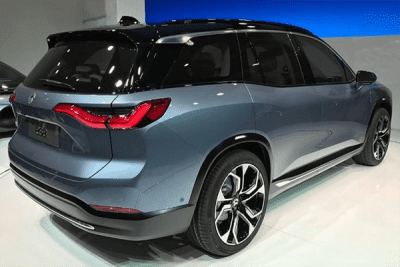 with the large chrome around the grille and headlights. Not too over-the-top, just in contrast with the clean lines of the rest of the car. From the rear 3/4 it has a bit of Toyota Highlander, but the overall styling is original and attractive. We haven’t seen the interior yet. NIO has a Joint Venture with Changan to produce the ES8 from late 2018, with sales in China to start in 2019 before expanding to Europe and the US. By that time its technology will be obsolete, as it’s not even that groundbreaking for current standards, with a range of just 300km/190 miles. NIO has not yet released further data on its battery and powertrain, except that it will have two electric motors, one for each axle.
with the large chrome around the grille and headlights. Not too over-the-top, just in contrast with the clean lines of the rest of the car. From the rear 3/4 it has a bit of Toyota Highlander, but the overall styling is original and attractive. We haven’t seen the interior yet. NIO has a Joint Venture with Changan to produce the ES8 from late 2018, with sales in China to start in 2019 before expanding to Europe and the US. By that time its technology will be obsolete, as it’s not even that groundbreaking for current standards, with a range of just 300km/190 miles. NIO has not yet released further data on its battery and powertrain, except that it will have two electric motors, one for each axle.
Qoros K-EV
Qoros has revealed a futuristic electric sports car which uses technology developed by supercar brand Koenigsegg, although they don’t share a lot of information about the powertrain. They claim the K-EV has a similar electric powertrain as the Koenigsegg Regera, but with 4 electric motors instead of 3. That gives it a total of 870hp, launching the sedan from 0 to 100km/h (62 mph) in 2,7 seconds with top speed of 260km/h (162 mph). If not pushed to these limits, the K-EV has a range of 480km/300 miles. If it makes it into production, the asymmetrical door mechanism 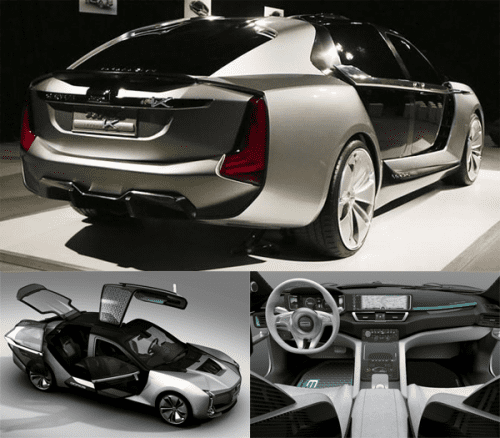 is likely to be ditched first. The concept car has a gullwing door on the driver’s side, while on the passenger side it has a front door that either opens conventionally or as a sliding door, while the rear door slides open too. Overall styling is more futuristic than realistic, and not necessarily very attractive, although that doesn’t seem to be the point of this concept car. Then again, it is supposed to preview an electric sedan for the Qoros brand that should hit the Chinese market in 2019.
is likely to be ditched first. The concept car has a gullwing door on the driver’s side, while on the passenger side it has a front door that either opens conventionally or as a sliding door, while the rear door slides open too. Overall styling is more futuristic than realistic, and not necessarily very attractive, although that doesn’t seem to be the point of this concept car. Then again, it is supposed to preview an electric sedan for the Qoros brand that should hit the Chinese market in 2019.
Qoros and Koenigsegg have teamed up before, when another concept car of the Chinese-Israeli brand used a cam-less engine developed by a subsidiary of the Swedish company, called FreeValve. This concept car from the 2016 Beijing Auto Show was appropriataly named QamFree and the technology is expected to enter Qoros road cars within the next few years. At the Guangzhou Auto Show last November this technology featured in a driveable Qoros 3.
WEY Pi4 VV7x SUV Coupe Concept
WEY is a newly founded luxury SUV brand of Great Wall, the company that also owns the Haval brand for crossovers and SUVs. Its first model, formerly known as the WEY 01, renamed VV7, should enter Chinese showrooms around this month, followed by a slightly smaller crossover which was renamed from 02 to VV5. Both have a distinctly SUV coupe-like appearance, but the brand apparently wants to take that a step further with the Pi4 VV7x Coupe Concept. And just like the name, the design of the car is questionable at best, in my opinion. The car has a huge black mesh grille that could scare a Lexus, big black fake air-inlets besides that grille and fake air-outlets behind the front 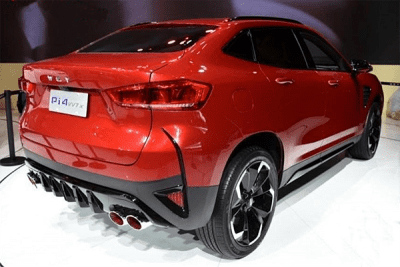 wheels. It gets worse at the back. If they tried to imitate the BMW X6, they miserably failed. The proportions of the rear-end are just not right by a country mile, it’s far too short and far too tall. Designers often struggle with making the rear look less tall, but that’s an impossibility for WEY. They still tried to do it with a huge diffusor, but that can’t hide the massiveness of the rear-end, which again has huge black fake air-outlets in the bumper. Like the Singulato iS6 mentioned above, the Pi4 VV7x Coupe Concept has a too high shoulder line which messes up the proportions of that part of the design. Please, back to the drawing board with this thing!
wheels. It gets worse at the back. If they tried to imitate the BMW X6, they miserably failed. The proportions of the rear-end are just not right by a country mile, it’s far too short and far too tall. Designers often struggle with making the rear look less tall, but that’s an impossibility for WEY. They still tried to do it with a huge diffusor, but that can’t hide the massiveness of the rear-end, which again has huge black fake air-outlets in the bumper. Like the Singulato iS6 mentioned above, the Pi4 VV7x Coupe Concept has a too high shoulder line which messes up the proportions of that part of the design. Please, back to the drawing board with this thing!

